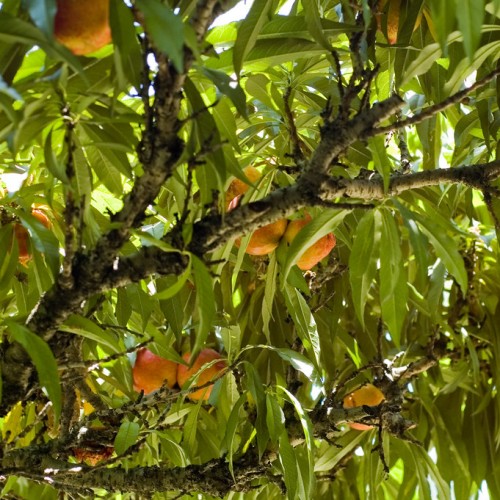
dwarf nectarine
Prunus persica var. nectarina 'Leprechaun'
Cycle:
Perennial
Watering:
Average
Hardiness Zone:
6 - 9
Flowers:
Flowers In Spring
Sun:
Full sun
Fruits:
Fruits Ready In
Edible:
Yes
Leaf:
Yes
Growth Rate:
Low
Maintenance:
High
Drought Tolerant:
Yes
Care Level:
Medium
watering
Dwarf nectarines need regular watering during the growing season to remain healthy and productive. Generally, they should be watered once a week during the summer, and every 10-14 days in the cooler months. It's important to water deeply, so that the water penetrates the soil and reaches the deep roots. The amount of water needed will depend on your local weather and climate conditions. If it's been especially dry or hot, water more frequently (every 5-7 days). If it's cooler, less water is needed (every 10-14 days). When you irrigate, make sure the water reaches the entire root zone. An easy way to check is to dig a few inches in the soil to see if the water has adequately penetrated. Another way to check is to look for signs of wilting. If your plants are drooping, it's a sign that they need water. Finally, make sure to water in the morning or early afternoon, to give the plant time to dry before the day's cooler temperatures.
sunlight
Dwarf nectarines require a minimum of 5-6 hours of full sunlight each day for optimal growth and fruit production. When the tree blooms in spring, it needs about 8 hours of sunlight daily. For the rest of the growing season, it should receive at least 6 hours of full sunlight daily. Positioning your dwarf nectarine tree in direct sunlight for the majority of the day is the best way to ensure it develops a deep root system, produces strong flowers and optimal fruit.
pruning
For best results, dwarf nectarines should be pruned during the winter months, preferably after the first hard frost. Pruning should be done selectively, removing dead or diseased branches, and removing volunteers (or shoots growing from the roots that will compete for available water and nutrients). When removing branches, be sure to prune above a branch collar or branch junction, taking care not to leave a large stub which could become infected with disease organisms. Additionally, prune back any branches that are growing incorrectly, those that are overly crowded, or any branches that are competing with the leader (main stem) for dominance. Finally, in order to maintain an attractive shape and reduce the amount of work in following years, be sure to remove any crossed branches and suckers growing from the base of the trunk or the rootstock.
